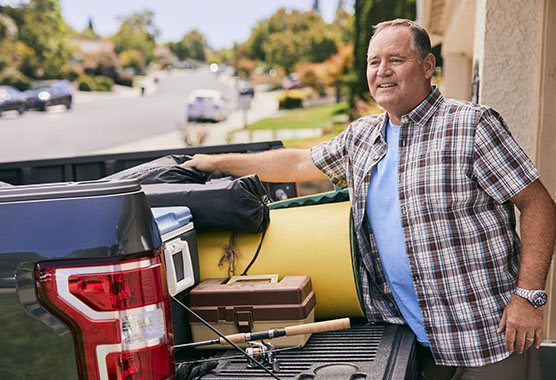Mike has spent his whole career as a pilot. First, performing search and rescue in the Coast Guard and later safely flying passengers for a major airline.
“I love flying,” he says. “If I can’t pilot airplanes, I’m really not qualified to do anything else.”
But 15 years ago, Mike began feeling a tingling moving down his arm. It was diagnosed as radiculopathy, an early symptom of degenerative cervical disc disease. Neck pain soon followed. “I was fine when I was up and moving around. But if I sat for a long time, the pain would build up.”
Mike’s usual workday, 7 to 10 hours a day sitting in a cockpit, became unbearable.
For years, he managed the pain with stretching and Tylenol. But there were also days when he simply couldn’t fly. "It’s not safe to pilot an aircraft if you’re fighting that kind of discomfort." Epidural steroid injections helped for years, but when the pain started returning a few weeks after a shot, Mike knew if he wanted to keep flying, he was headed toward surgery.
But what kind of surgery – and which surgeon – would get Mike back in the air?
Searching for a solution
Mike began researching his options. Another pilot told him that disc replacement surgery had fixed his neck following an injury. But as Mike studied the surgical journals, he learned that when degenerative disc disease progresses as far as his, there may not be enough space left between the vertebrae to insert a disc.
The alternative, disc fusion, didn’t seem like a better choice. Mike, trained as an engineer, realized that fusion would “transfer the structural load to adjacent discs” — and his other cervical discs had problems of their own. The procedure would also reduce the mobility he needs to fly.
After all the research, Mike concluded that a disc replacement was his best chance to preserve the mobility he needed to fly and relieve the pain he was experiencing. He started to make appointments around the region to select his surgeon. The first surgeon to examine him said, “I’m not going to put a disc in you, Mike. You’re no longer a candidate for disc replacement, you’re going to get fused.”
Mike began to think he might be living with the pain for the rest of his life – because sooner or later the other discs would go – and he’d be back at square one.
I realized that I had a chance. I’ll get another 10 years of flying out of this neck.—Mike
Pilot and surgeon team up
Seeking out another opinion, Mike visited Dr. Kee Kim, chief of spinal neurosurgery and co-director of the Spine Center at the UC Davis Medical Center, who turned things around with a new idea.
After a full examination and review of tests, Dr. Kim said, “Mike, I think we can put a disc in you.” In fact, Dr. Kim proposed replacing two discs in an innovative procedure that would restore his neck to full mobility without pain.
It didn’t take Mike long to realize that many of the research papers he had been reading were authored by the very same Dr. Kim. He had found one of the world’s leading neurosurgeons for his particular condition just minutes from home.
“I realized,” says Mike, “that I had a chance.”
Discovering healthy
On Feb. 1, 2018, Mike woke up after four hours of surgery. Three days later, he took a walk around his neighborhood. Ten days later he was off all pain medication. Within a month, he began physical therapy. And by April 1, he had been approved by the Federal Aviation Administration to fly again.
Because that’s the mission of Dr. Kim and his team at the UC Davis Spine Center. Collaborating with patients like Mike means understanding what matters most to them—and then finding a solution that will get them back to the lives they love.
“I’ll get another 10 years of flying out of this neck,” says Mike with a grin.

